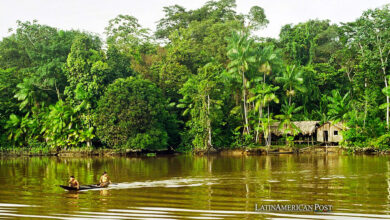UN Adopts a Global Agreement to Protect Marine Biodiversity
This Monday, June 19, the United Nations adopted an agreement that seeks to guarantee the conservation of marine biodiversity. The agreement will have to be ratified by 60 nations to enter into force.

Photo: Pexels
LatinAmerican Post | María Fernanda Ramírez Ramos
Listen to this article
Leer en español: ONU adopta un acuerdo mundial para proteger la biodiversidad marina
The United Nations Organization has adopted an agreement to conserve and protect marine biodiversity in international waters, that is, in waters located outside national jurisdictions. It is estimated that this area covers more than two thirds of the planet's oceans. This is a crucial agreement to safeguard the oceans. The text, closed in March after a lengthy negotiating process, has been formally approved by government representatives.
António Guterres, the UN secretary-general, praised the deal, calling it "historic." Likewise, he highlighted the capacity of the international community to unite in response to global challenges. However, although it is good news, there are still steps to make this protection effective. As of September 20, the States will be able to sign and ratify the agreement, and the term to sign it will be open for two years. "By acting to combat threats to our planet that go beyond national borders, you demonstrate that global threats require action on a global scale," Guterres said.
Conservation of marine life: an urgent matter
Preserving and protecting the oceans is an urgency for humanity. Proper conservation of the oceans and marine biodiversity not only affects marine life, but also other ecosystems. Likewise, it is one of the largest carbon sinks and a source of food for millions of people, not only for fish but also for algae and marine plants.
This new global treaty is considered vital by environmental groups to preserve the oceans. They face a series of threats due to pollution, the climate crisis and the indiscriminate exploitation of marine resources. Likewise, this new agreement lays the foundation to provide protection to international or overseas waters, which constitutes an area with few clear rules for its protection. In this way, it is intended that protected marine zones be created and a constant evaluation of the environmental impact is made. In addition, it seeks a commitment to cooperation between countries and the promotion of technologies for environmental service.
We suggest you read: These Are The Main Causes Of Pollution In The Oceans
An agreement for the oceans in 4 keys
The treaty for the protection of high seas biodiversity covers four basic points. First, it will establish a framework for the equitable sharing of benefits derived from activities related to marine genetic resources and digital sequencing, ensuring that these benefits are of benefit to all humanity.
Second, it allows zone management, such as marine protected areas, to conserve and sustainably manage high seas species and habitats in international zones. These measures are essential to achieve the global goal of conserving and managing at least 30% of terrestrial and marine areas by 2030, according to the Kunming-Montreal Global Biodiversity Framework. This objective of 30% of protected areas has already been met by several countries, and others are close to achieving it.
Thirdly, it will guarantee the evaluation and examination of the environmental impact of activities in areas outside national jurisdictions. For this, it will establish a legal framework that aims to establish evaluation methods. Finally, it will facilitate the transfer of marine technology necessary to help developing countries achieve the objectives of the agreement.




